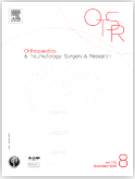
The aim of this retrospective study was to evaluate long-term radio-clinical outcome in scapulothoracic fusion using the Letournel technique (where the fourth rib is passed through the wing of the scapula and cerclage wires are tightened to the two ribs below) for patients suffering from facioscapulohumeral muscular dystrophy (FSHMD. Mean improvement in range of motion was 36° (σ=32°) in abduction and 40° (σ=44°) in flexion. Postoperatively, active abduction averaged 99° (σ=28°) and active flexion 110° (σ=45°). In one case, a 58 year-old patient, gain in motion was 50° for abduction and 60° for anterior elevation. In one patient, range of motion showed bilateral decrease, due to the natural course of the FSHMD. No intraoperative complications were reported.
